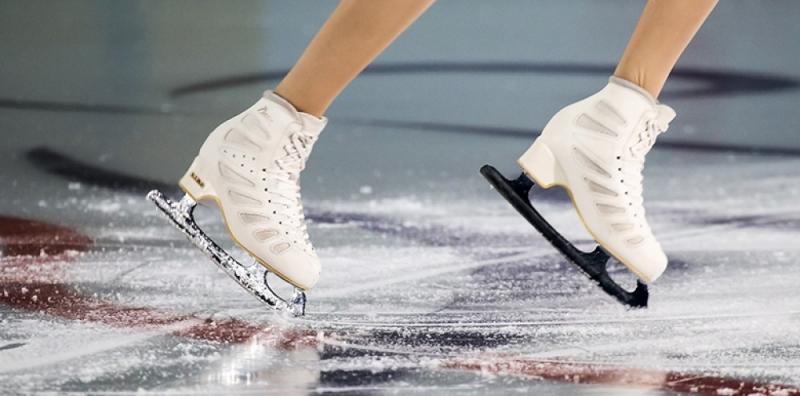Ice-skating: Drills to Help You Become A Better Skater
Ice-skating: Drills to Help You Become A Better Skater
For some, ice skating is certainly not an all-year movement — however when temperatures drop, scarcely any colder time of year pursuits appear to fit the season as consummately. In any case, pulling on a couple of skates, particularly as a grown-up, can be scary on the off chance that you don’t have a clue what you’re doing.
On the off chance that you feel more precarious than elegant, acquiring new abilities to change your on-ice structure, off-ice wellness, and in general, attitude can help you catch the delight in skimming across frozen surfaces — and help you stay fit for different exercises, as well.
“Ice skating is a full-body exercise,” says serious professional skater Kelly Cassity, presently the Learn to Skate organizer at the Utah Olympic Oval. “Attempting to adjust on a 4-millimeter-thick cutting edge requires equilibrium, assurance, and coordination.”
The greatest mix-up grown-ups make, she clarifies, is solidifying up out of anxiety when they step onto the ice. That makes falls considerably more agonizing, on the grounds that your strained muscles can’t assimilate sway too. Keeping your knees bowed, remaining low to the ice, and figuring out how to fall and get back up will benefit you.
Off the ice, skaters can chip away at equilibrium and center strength prior to working on edging, hybrids, and different drills on ice.
Learning these basics will pay off, says Cassity. “There’s a feeling of pride and fulfillment from going out and accomplishing something that is troublesome. Additionally, skating can be exceptionally social, so it’s an extraordinary method to associate with individual grown-ups.”
Skating is likewise an ideal method to create perseverance, says previous school hockey player Andy Ness, current mentor at Minnesota-based ProEdge Power and skating and expertise mentor for the Minnesota Wild. “When you figure out how to skate well, you can practice on the ice anyplace,” he says.
Cassity and Ness share these straightforward tips and penetrates to assist sporting skaters with appreciating the ice.
Strategy Tips
Drill 1: Stretching
Agile muscles mean more-smooth motions on the ice, yet in addition, less (and less excruciating) falls, says Cassity. She suggests the accompanying lower-body extends, which you can do at home as a component of your preparation. Consistently, after a short powerful warm-up, for example, running or hopping jacks, practice these moves.
·Prostrate Hamstring Stretch: Lie on your back with the two legs straight. Lift up one leg and hold the rear of your thigh, calf, or lower leg for help. Keeping the two legs completely expanded, draw your raised leg toward your head so you feel a stretch in your hamstring; don’t pull to the point of torment. Utilize an obstruction band or towel circled around your foot for added uphold. Hold for one to two minutes for every leg.
·Hip-Flexor Stretch: Stand with feet stunned, the front foot 3 to 4 feet before the back foot. With hands-on-hips and center propped, permit the back heel to lift while twisting the front knee straightforwardly over the toes. Lurch down, keeping your chest up and front shin vertical. Fix the back leg and crush your glutes to feel a stretch in the front of that ship. Hold for 30 seconds on each side.
Drill 2: Balance
This drill develops the fortitude and equilibrium expected to remain upstanding on the ice, clarifies Ness. Three times each week, add this three-section move to your activity schedule.
·Remain on the bent side of a BOSU ball with feet hip-distance separated. Squat with submit front, elbows bowed, and palms looking ahead. Keeping up the squat, move your hands to one side and right, turning your middle and head a similar way. Rehash multiple times toward every path.
·Stand up on the BOSU ball, at that point lift your correct foot and tap it down to the floor on the correct side. Re-visitation of the middle and rehash with the left leg. Complete 20 reps, exchanging sides.
·With your correct foot on the BOSU ball, broaden you gave up the leg you around 2 to 3 feet, so your left toes are on the floor, impact point lifted. Curve your knees to play out a jump. Complete 10 reps and change to the opposite side.
Drill 3: Falling and Getting Up
Figuring out how to fall accurately will help shield you from injury when you tumble startlingly, says Cassity. The key is to arrive on a more strong part, not on your hands. Start by rehearsing off the ice, first without skates and afterward with skates on. Then, move to the ice and tumble from a stop, while moving gradually, and afterward while skating all the more rapidly.
·Wearing gloves and wrist monitors, put your hands before you and curve your knees somewhat and squat.
·Tumble aside, padding the effect basically on your butt, hip, or upper arm.
·To get back up, utilize your hands to reposition yourself down on the ground.
·Spot one foot between your hands, and afterward the other.
·Stand up gradually, keeping the glutes pressed and knees bowed for strength.
Drill 4: Edging
·Certainty on the ice comes from growing great equilibrium and strength on your cutting edge edges, says Ness. When you can skate with solidness, start every arena meeting with this drill.
·Skate from one finish of the arena toward the other. After three steps, turn in a little hover on one leg, zeroing in on adjusting outwardly edge of the skate.
·Skate forward again for three additional steps and rehash on the other leg. Make sure to twist your knees, drop your hips, and stay low to the ice.
·Substitute legs, step by step expanding your solidarity and endurance to finish five entangles and down the ice.
Be the first to post a message!
